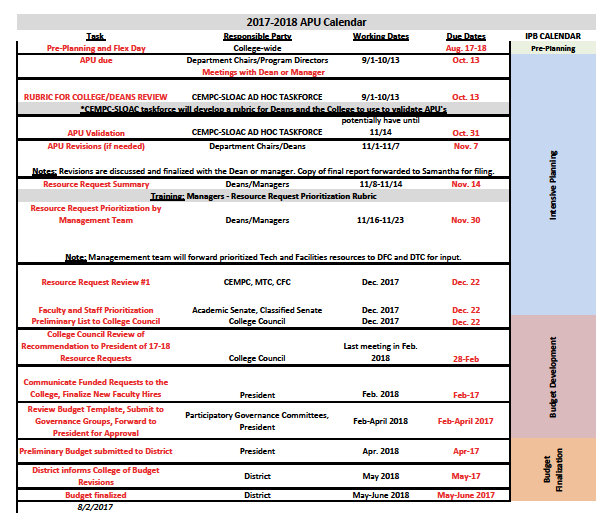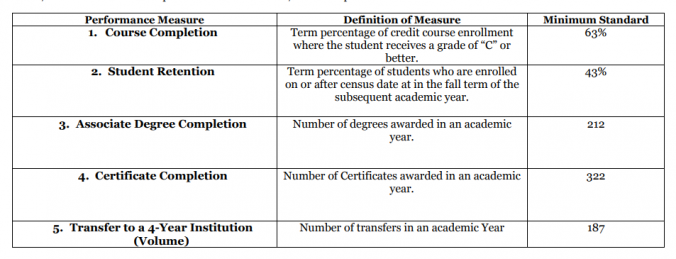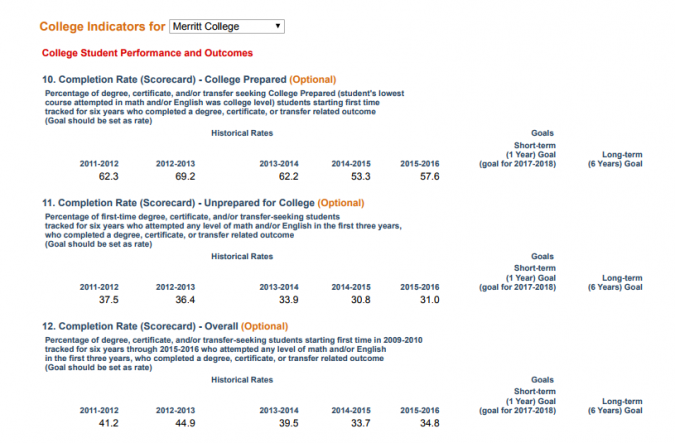Introduction and Directions
The Peralta Community College District has an institutional effectiveness process which consists of the following components: a District-wide Strategic Plan which is updated every six years; Comprehensive Program Reviews which are completed every three years; and Annual Program Updates (APUs) which are completed in non-program review years. While there are individualized Program Review Handbooks for Instructional units, Counseling, CTE, Library Services, Student Services, Administrative units, and District Service Centers, there is one Annual Program Update template for use by everyone at the colleges which is completed in the Fall semester of non-program review years.
The Annual Program Update is intended to primarily focus upon planning and institutional effectiveness by requesting that everyone report upon the progress they are making in attaining the goals (outcomes) and program improvement objectives described in the most recent program review document. The Annual Program Update is therefore a document which reflects continuous quality improvement. Additionally, the Annual Program Update provides a vehicle in which to identify and request additional resources that support reaching the stated goals (outcomes) and program improvement objectives in the unit’s program review.
Throughout this document, the term “program” is used to refer to all of these terms: discipline, department, program, administrative unit, or unit.
If you have questions regarding data, please contact Samantha Kessler, Research and Planning Officer skessler@peralta.edu. If you have questions regarding other material in the APU, please contact your Dean or Manager.
You will need the following items in order to complete the Annual Program Update:
- Most recently completed Program Reviews and APUs
- Any comments or feedback provided during the program review validation process
- District and College Strategic Goals
- Institution-Set Standards (Standards reported annually to ACCJC)
- College Institutional Effectiveness Indicators (Goals reported annually to CCCCO)
- College Educational Master Plan
- College SSSP, Student Equity and Basic Skills Plans
- Data profiles, Taskstream and Curricunet reports
2017-2018 Timeline
District and College Strategic Goals
2016-2017 Institution-Set Standards
2016-2017 Institutional Effectiveness Indicators
2015-2020 Educational Master Plan
The Educational Master Plan (EMP) serves as a key part of the College’s integrated planning process and will be implemented during the next five years through action-oriented strategic plans. It is the foundation and primary reference for guiding program planning and reviews, managing student learning outcomes, and coordinating College resources.
Strategic Directions
Student Success
The College will engage in integrated planning related to student success, student equity, distance education, foundation skills, career technical education and transfer curriculum.
Partnerships
The College will enhance, pursue and increase partnerships with educational, nonprofit and community employers to enhance and create viable and timely programs.
Non-Credit to Credit Pathways
The College will increase non-credit pathways leading to credit programs for native and nonnative English speakers focused on developing self-advocacy, civic engagement and self-sufficiency.
Engagement and College Culture
The College will implement strategies to increase student, faculty and staff equity and engagement and will create a culture of inclusiveness that demonstrates value of diversity across the campus.
Institutional Stability
The College will utilize data driven decision making based on learning assessments in the Integrated Planning and Budgeting Model to advocate for adequate human, technological, facility and fiscal resources to support successful achievement of the Educational Master Plan strategic initiatives.
SSSP/Student Equity/Basic Skill Plan Overviews
2015-2016 SSSP Plan Goals
The Student Success and Support Program (SSSP) is a state mandated program that provides critical support services to students on the front-end of their educational experience to increase student success. The 5 Components of SSSP that help ensure educational success are: Admission, Orientation, Assessment, Counseling and Advisement and Follow-up.
Access
Increase enrollment of under-represented populations within the College service area, specifically Latino and African American male students.
Course Success
Increase overall college successful completion rate (students earning grade C or better in the course).
ESL and Basic Skills Completion
Increase course success rates and ensure that students succeed at the same rate as the overall College percentage of students who successfully complete courses.
Degree and Certificate Completion
Increase the number of students obtaining a degree or certificate, specifically number of degrees earned by African American and American Indian/Alaskan Native, and number of certificates earned by African American, American Indian/Alaskan Native, and Hispanic/Latino students.
Transfer
Increase transfers to CSU and UC, specifically African American and Hispanic/Latinos.
2015-2018 Student Equity Plan Goals
The Student Equity Plan uses campus-based research and data analysis to identify target groups in need of academic performance improvement. The plan outlines goals and activities to decrease performance gaps for disproportionately impacted student groups.
The 2015-16 Student Equity Plan is centered on the main purpose of achieving equity throughout the student body that is reflective of the diversity of the community served by Merritt College while striving to ensure student access, retention and success across student equity indicators and target groups. The overall goals of the 2015-16 Student Equity Plan are based on the following principles:
- Improve student access to college programs and services;
- Increase and balance student equity and diversity in college programs and services;
- Improve success by closing the performance gap and mitigating disproportionate impact for identified target group
Overall goals are based on local and state data requirements, institutional data analysis and key findings from 2006 to 2014 and are grounded in moving the college toward achieving stated goals and activities identified in the Student Equity Plan. The target groups identified for each indicator in the “Goals and Activities” section are considered a priority. Below is a summary of goals under each indicator:
Access
Improve access of under-represented populations within the college service area to
- Increase the African American population;
- Increase the Hispanic/Latino population;
- Increase the male student population;
- Increase the foster youth population.
Course Completion (Retention)
Increase overall college retention rate to
- Improve course completion for African Americans in Mathematics and English;
- Improve Fall to Spring course completion rates, particularly for African American and Hispanic/Latino students;
- Improve course completion for Native Hawaiian/Pacific Islander students;
- Improve course completion for foster youth.
ESL and Basic Skills Completion
Increase completion rates and ensure that students succeed at the same rate as the overall percentage of students who successfully complete courses with a grade of A, B, or C or Credit as follows:
- Improve ESL course completion for Hispanic/Latino, American Indian/Alaska Native, and Foster Youth;
- Improve Basic Skills course completion in English;
- Improve Basic Skills course completion in Mathematics.
NOTE: Per the 2014 Basic Skills Initiative (BSI) End-of –the-Year Report, this Equity Report reaffirms pre-established goals to
- Increase the successful course completion rate for credit Basic Skills and ESL courses by 2% per year (10% over five years);
- Increase the persistence of Basic Skills and ESL students by 2% per year (10% over five years);
- Increase the percentage of students who progress from basic skills to transfer level mathematics or English by 2% per year (10% over five years).
Degree and Certificate Completion
Increase the number of students obtaining a degree or certificate who are below the .85 level:
- Degree: African American, American Indian/Alaskan Native, Foster Youth
- Certificates: African American, American Indian/Alaskan Native, Hispanic/Latino, Foster Youth
Transfer
Increase the overall college transfer rate to aim to reach 1.0 level for groups not achieving this level:
- Focus on under-represented populations to CSU and UC:
- African American
- Hispanic/Latinos
- American Indian/Alaska Native
- Low income
Basic Skills Plan Goals
The Basic Skills Initiative supports academic achievement and personal development of students who are building their reading, writing, critical thinking and mathematical skills to succeed in college-level work through excellent academic programs and comprehensive support services.
- Increase the placement of students directly in transfer-level English and Mathematics courses through the adoption of placement tests, other student assessment indicators and related policies that include multiple measures.
- Accelerate student completion of transfer-level English and Mathematics courses by shortening course sequences for underprepared students.
- Increase student completion of basic skills and gateway transfer-level courses by providing pro-active student support services that are integrated with instruction.
- Accelerate student progression through CTE pathways by contextualizing remedial instruction in foundational skills.





